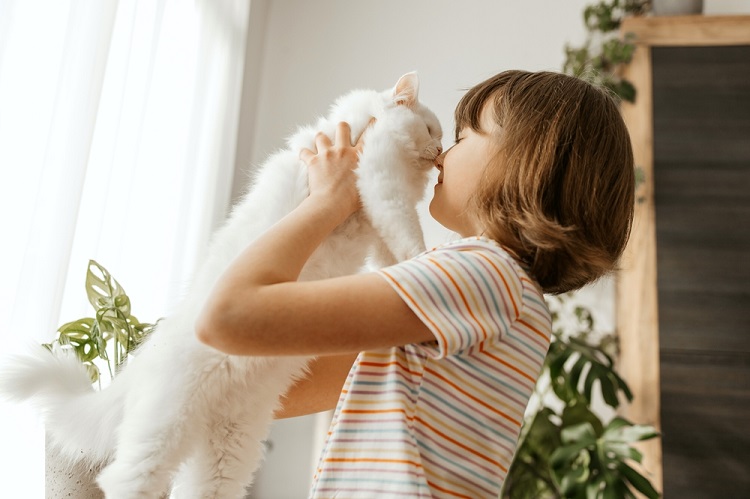From a wagging tail to a soft purr, our pets have myriad ways to communicate their feelings. But what really goes on in their minds? Are these behaviours mere instincts, or do they stem from genuine emotions?
With the advancements in animal behaviour science and neurology, we are inching closer to understanding the emotional world of our beloved pets.
Table of Contents
Emotional Evolution: Why Do Animals Have Emotions?
To grasp the origins of pet emotions, it’s crucial to consider evolutionary biology. Emotions, in essence, are adaptive responses that have evolved over millennia to help animals survive and reproduce. For instance, fear propels an animal to avoid danger, while joy might strengthen social bonds.
For our domestic pets, especially dogs and cats, their evolution alongside humans has likely fine-tuned their emotional responses, making them more attuned to human interactions.
Brain Waves: The Neurological Underpinnings
Modern technology, such as Magnetic Resonance Imaging (MRI), has enabled scientists to study the brains of pets while they’re awake and responsive. Dr. Gregory Berns, a pioneer in this area, used MRI to show that the canine brain processes emotions similarly to the human brain.
Key findings include:
The caudate nucleus, a region associated with pleasure and rewards in humans, is activated in dogs when they smell their owner or anticipate food.
Areas linked to attachment and affection, like the anterior cingulate cortex, show activity when dogs are cuddled or praised.
For cats, while their emotional tapestry is less studied than dogs, preliminary research also indicates deep emotional capacities. Their brains, too, light up in regions associated with pleasure, fear, and affection, signalling a rich emotional life.
Emotion vs. Instinct: Making the Distinction
It’s essential to differentiate between instinctive behaviours and emotional ones. For instance, a cat might knead with its paws—an instinctual behaviour linked to nursing as kittens. However, when a cat purrs while kneading, it’s often seen as a sign of contentment—an emotion.
Similarly, a dog might howl—an instinctive form of communication. But the emotion behind the howl could vary: loneliness, alertness, or even joy.
Complex Emotions: Do Pets Feel Love, Jealousy, or Shame?
While we’ve established that pets have primary emotions like joy, fear, and anger, do they experience complex emotions?
Love & Attachment: Dogs, in particular, showcase signs of genuine affection and attachment, not merely conditioned responses. Oxytocin, often dubbed the “love hormone,” is released in both dogs and humans when they interact, suggesting a deep bond.
Jealousy: Anyone with multiple pets might have witnessed jealousy. Research has shown that when one dog gets a treat and another doesn’t for the same trick, the unrewarded dog becomes stressed—a possible sign of envy (Groodle owners can surely relate).
Shame: The jury is still out on this one. While many pet owners swear their pets show guilt or shame, scientists argue it might be a misinterpretation. What appears to be a ‘guilty look’ might be a submissive response to an owner’s disappointment.
The Impact of Recognizing Pet Emotions
Understanding that pets have genuine emotions has profound implications:
Better Pet Care: Recognizing signs of stress, anxiety, or joy allows pet owners to cater to their pet’s emotional needs, ensuring their well-being.
Training with Empathy: With the knowledge that pets have feelings, training methods have evolved. Positive reinforcement, which acknowledges the pet’s emotional state, is now favoured over punitive measures.
Pet Therapy: Recognizing the emotional depth of animals has paved the way for therapy animals. Their ability to connect emotionally makes them invaluable in hospitals, schools, and therapy sessions.
Conclusion
The science behind pet emotions is still evolving, but one thing is clear: our pets feel deeply. Their emotional world might not mirror ours precisely, but it is rich, genuine, and deserves recognition and respect. As science continues to delve into the mysteries of the animal mind, pet owners worldwide are already privy to a simple truth: the bond with a pet is an emotional, profound, and beautiful journey.




